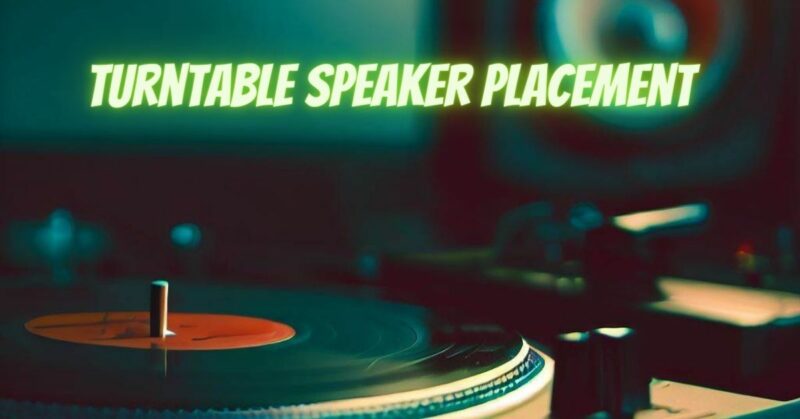Listening to vinyl records on a turntable can be a uniquely immersive and nostalgic experience. To fully enjoy the warmth and depth of analog sound, it’s essential to pay attention to the placement of your speakers. In this article, we’ll explore the best practices for turntable speaker placement to help you achieve the optimal listening experience.
The Importance of Speaker Placement
The placement of your speakers significantly impacts the quality of sound you’ll hear when playing vinyl records on your turntable. Proper speaker placement can enhance clarity, balance, and overall sonic enjoyment. Conversely, poor placement can lead to issues like imbalanced sound, unwanted resonances, and a less satisfying listening experience.
Consider Your Listening Room
Before placing your speakers, consider the acoustics of your listening room. Factors like room size, shape, and the materials used for walls and floors can influence sound propagation. Here are some tips to keep in mind:
- Room Size: Larger rooms may require larger speakers or additional speakers to fill the space adequately.
- Room Acoustics: Rooms with hard, reflective surfaces (like hardwood floors) tend to produce more reverberation and potential for echo. Conversely, carpeted and furnished rooms absorb sound, reducing reflections.
- Speaker-Listener Distance: The distance between your speakers and your listening position (the “sweet spot”) plays a crucial role in sound quality. A balanced stereo image is typically achieved with an equilateral triangle setup, where the distance between the speakers is equal to the distance from each speaker to the listener.
Optimal Turntable Speaker Placement
Follow these guidelines to optimize the placement of your speakers for turntable listening:
- Position the Turntable: Start by placing your turntable on a stable surface away from any potential vibrations or sources of interference, such as speakers.
- Stereo Imaging: Position the speakers so that they create a clear stereo image in front of you. The speakers should ideally be at ear level when you’re seated in your listening position.
- Equal Distance: Ensure that the distance between the speakers is roughly equal to the distance from each speaker to your ears when you’re seated. This helps create a balanced stereo field.
- Angle the Speakers: Slightly angle the speakers towards your listening position to direct sound toward your ears. This can enhance clarity and focus.
- Avoid Obstacles: Keep the area between the speakers clear of obstructions, as objects can affect sound dispersion and imaging.
- Isolation: Use isolation pads or stands to minimize vibrations and resonance between the speakers and the surface they’re placed on. This can help reduce unwanted vibrations that might affect vinyl playback.
- Room Acoustics: If your room has challenging acoustics (e.g., too many hard surfaces), consider adding acoustic treatments such as rugs, curtains, or acoustic panels to mitigate reflections and improve sound quality.
- Experiment: Don’t be afraid to experiment with speaker placement. Small adjustments can make a significant difference in sound quality. Take the time to fine-tune the positioning until you achieve the desired sound.
Optimizing turntable speaker placement is a critical step in enhancing your vinyl listening experience. By considering room acoustics, speaker positioning, and the proper distance from your listening position, you can achieve a balanced and immersive soundstage that brings out the best in your vinyl records. Whether you’re a casual listener or an audiophile, taking the time to set up your speakers correctly will reward you with the rich, analog sound that vinyl enthusiasts cherish.


